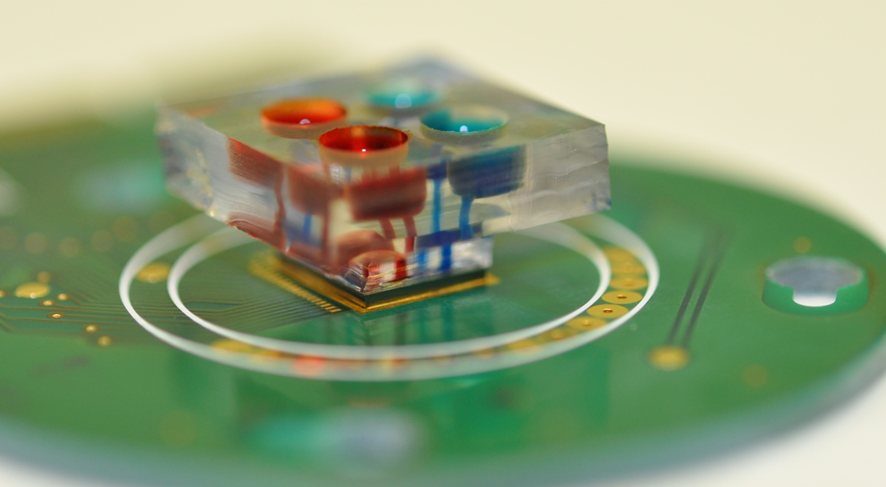Microfluidic and Microphysiological Systems
external page Microtechnology is technology with features near one micrometer (one millionth of a meter, or 1μm). Not only electrical devices, but also mechanical and fluidic devices, can be miniaturized and batch-fabricated, promising the same benefits to the mechanical and fluidic world as integrated-circuit (IC) technology has given to the electrical world.
external page Microfluidics specifically deals with the behavior, precise control and manipulation of fluids that are geometrically constrained to a small, typically sub-millimeter, scale. The advantages include a precise control (temperature and volume) and dosing of the fluid, and low energy and reagent consumption. Microfluidics is, e.g., used in the development of inkjet printheads, diagnostic devices, or lab-on-a-chip technology.
external page Microphysiological systems (MPSs), also known as "organs-on-a-chip", are advanced in vitro models of human or animal origin in a microenvironment, designed to mimic the physiological aspects of tissue and organ function. They can be used to study human biology, test drugs, and research diseases in a more human-relevant context than traditional animal models or 2D cell cultures.
We develop microfluidic and microphysiological systems for culturing, manipulation, and analysis of cells and tissues, for measurements with tissues and/or across physiological barriers, and to apply impedance methods to characterize cell ensembles and the tightness of physiological barriers.
(1) Tissue Systems
Microtechnological and microfluidic means are used to accommodate and cultivate tissues and to and expose them to pharmacological agents. These tissues include on the one hand, excised tissus and tissue slices of animal and human origin as well as so-called microtissue spheroids, spherical 3D ensembles of dissociated cells that feature a diameter between 200 and 500 μm. Applications include drug and compound testing.
More information
(2) Barrier Systems
Microtechnological and microfluidic means are used to develop models of physiological barrier systems that protect the human body against harmful substances and pathogens. The barriers can be physical, chemical, or biological, and they play a crucial role in maintaining the body's internal environment. Examples include endothelial barriers like in blood vessels or the bladder, mucous membranes like in the lung, or components of the innate immune system.
More information
(3) Resistance and Impedance Measurements
Microstructured electrodes are used to apply electrical potentials and to perform resistance and external page impedance measurements across cells, tissues or physiological barriers simultaneously at multiple frequencies. Electrical signals are used in a label-free approach to measure parameters like cell and tissue size, membrane properties, or electrical cellular and tissue characteristics.
More information
